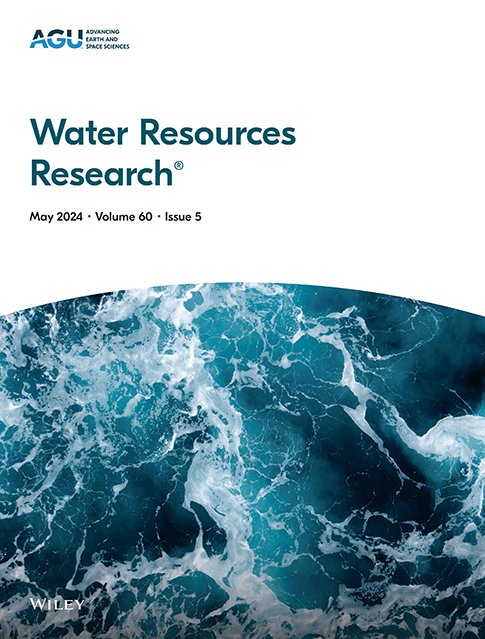Predicting the Transport Time of Supersaturated Total Dissolved Gas in a Large Deep Reservoir
IF 4.6
1区 地球科学
Q2 ENVIRONMENTAL SCIENCES
引用次数: 0
Abstract
During dam discharge, supersaturated total dissolved gas (TDG) is generated in the plunge pool and transported downstream for a long distance. Fish living in supersaturated TDG water may suffer from gas bubble disease and even death. Investigating the transport time of supersaturated TDG helps to predict better the downstream impact range and duration of TDG supersaturation and then facilitate mitigation measures for fish in time. From another perspective, it also contributes to optimizing flood discharge management and enhancing the effectiveness of ecological management strategies. This is essential for improving the effectiveness of ecological management strategies. This study utilized a laterally averaged numerical model to investigate the factors influencing the supersaturated TDG transport time in a large deep reservoir. The Baihetan (BHT)–Xiluodu (XLD) hydropower stations were selected as the research object. Simulations under various BHT–XLD joint operation strategies were conducted to analyze the supersaturated TDG transport time in the XLD Reservoir. It is revealed that the transport time of supersaturated TDG is associated with the discharge flow and reservoir characteristics. A power function relationship was identified between the transport time and the transport distance as well as the discharge flow. The relationship among the transport time, water depth, and total volume follows a linear function. Furthermore, a quantitative relationship between the transport time and these four influencing factors was established. The results provide a scientific basis for the accurate prediction of the supersaturated TDG transport process in large deep reservoirs and the formulation of effective regulation and early warning schemes.大型深部储层过饱和总溶解气输运时间预测
泄洪过程中,滑水池中产生过饱和总溶解气(TDG),并向下游长距离输送。生活在过饱和TDG水中的鱼可能会患气泡病,甚至死亡。研究过饱和TDG的输送时间有助于更好地预测TDG过饱和对下游的影响范围和持续时间,从而及时采取缓解措施。从另一个角度来看,它也有助于优化泄洪管理,提高生态管理策略的有效性。这对提高生态管理战略的有效性至关重要。本文采用横向平均数值模型研究了大型深层水库中过饱和TDG输运时间的影响因素。选取白鹤滩-溪洛渡水电站作为研究对象。通过不同BHT-XLD联合作业策略下的模拟,分析了XLD油藏TDG过饱和输运时间。结果表明,过饱和TDG输运时间与流量和库区特征有关。发现输运时间与输运距离及流量呈幂函数关系。输运时间、水深与总体积之间呈线性关系。此外,还建立了输运时间与这四个影响因素之间的定量关系。研究结果为准确预测大型深层水库TDG过饱和输运过程,制定有效的调控预警方案提供了科学依据。
本文章由计算机程序翻译,如有差异,请以英文原文为准。
求助全文
约1分钟内获得全文
求助全文
来源期刊

Water Resources Research
环境科学-湖沼学
CiteScore
8.80
自引率
13.00%
发文量
599
审稿时长
3.5 months
期刊介绍:
Water Resources Research (WRR) is an interdisciplinary journal that focuses on hydrology and water resources. It publishes original research in the natural and social sciences of water. It emphasizes the role of water in the Earth system, including physical, chemical, biological, and ecological processes in water resources research and management, including social, policy, and public health implications. It encompasses observational, experimental, theoretical, analytical, numerical, and data-driven approaches that advance the science of water and its management. Submissions are evaluated for their novelty, accuracy, significance, and broader implications of the findings.
 求助内容:
求助内容: 应助结果提醒方式:
应助结果提醒方式:


